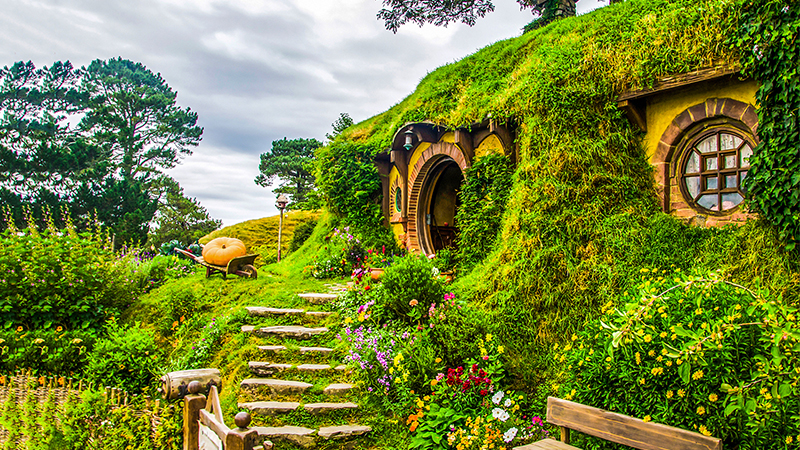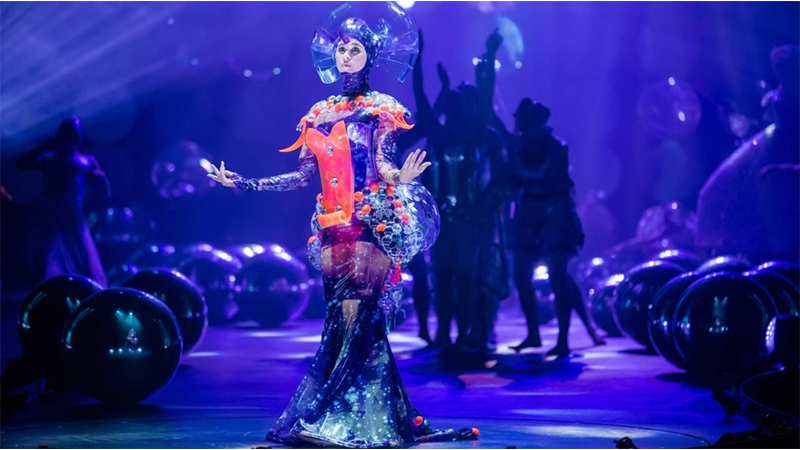If you love nature, fresh air, stunning mountains, pristine lakes, outdoor adventures, gorgeous fresh produce, world-class wines and a unique culture, then NZ is right up your alley. Here’s a primer of eight great things to do in New Zealand (for newbies or anyone who needs a refresher!).
#1 Explore the biggest city in New Zealand – AUCKLAND
Auckland is something of an underrated gem. The location is hard to beat, for starters: you’re only a half hour or so by car from rugged beaches, stunning hikes, whale watching, island-hopping opportunities and world-class vineyards. Within the city itself, you can explore museums, visit the spiritual home of New Zealand rugby at Eden Park, or base jump on a wire from the top of the Sky Tower (which is taller than any other building in NZ – or Australia, for that matter).

There’s plenty of amazing food too. For a top-end dining experience that taps into local produce and culinary traditions, try Ahi (ahirestaurant.co.nz) or Onemata (onematarestaurant.co.nz).
Tip: If you’ll be in Auckland for a while and don’t want to hire a car until you venture further afield, buy an AT HOP Card for easy travel on buses, trains and ferries.
Did you know? Auckland is the world’s largest Polynesian city; around 15 percent of the population of 1.5 million are of Pacific origin.
#2 Gawk at a geyser – ROTORUA
The town of Rotorua (population 75,000) is built inside the crater of a volcano – but don’t worry; it hasn’t erupted for a quarter of a million years. That means you can safely explore the various geothermal parks in the area, taking in the dazzling coloured lakes, bubbling mud pools and lively geysers at leisure.

The most popular, and also the busiest, is Whakarewarewa (whakarewarewa.com), on the southern edge of town. A highlight here is the Pohutu Geyser. The geyser erupts violently up to 20 times a day, sometimes every 15 minutes. Water spurts as high as 30 metres into the air!
Rotorua is located in the Bay of Plenty and is a short drive from some charming towns. These include Cambridge for artisanal eats and beautiful scenery (it’s the equestrian capital of NZ) and Mount Maunganui for seaside hikes and dips in the ocean … in the warmer months.
Tip: Take a plane ride for a stunning aerial view of the region’s colourful geothermal energy.
Did you know? A Maori fort was located on the site of Whakarewarewa from the 14th century. It was renowned for never being taken by force.
#3 Get out on the water – BAY OF ISLANDS
The Bay of Islands is exactly what it says on the tin. This 16km-wide bay in the far north of the country is home to more than 140 islands. It’s also NZ’s best spot for diving, sailing and fishing (including big game fishing). You’ll also find giant sand dunes, stunning forests, amazing coastal hikes, kayaking opportunities, whale and dolphin watching trips and more.

A visit to the Waitangi Treaty Grounds (waitangi.org.nz) is also a must in the Bay of Islands. It has museums, heritage buildings, cultural performances and lots of fun stuff for kids. Of course, it’s also where New Zealand’s founding document, a treaty between 540 Maori chiefs and the British Crown, was signed.
You can fly here from Auckland, or it’s a three-hour drive.
Tip: It’s worth pushing on to Cape Reinga, New Zealand’s northernmost point, for its remote windswept vistas. Daily guided bus tours leave from Paihia in the Bay of Islands and take in spectacular Ninety Mile Beach too.
Did you know? Charles Darwin visited the Bay of Islands in the HMS Beagle in 1835.
#4 Hunts for Hobbits! – HOBBITON
You don’t have to be a fan of wizards and elves to appreciate the stunning cinematography in Peter Jackson’s Lord of the Rings films. And you don’t even need to be a movie buff to enjoy a visit to picturesque Hobbiton (hobbitontours.com). Everyone will appreciated the area’s gorgeous rolling green hills and pastures. Jackson discovered this spot while scouting for locations for the first film in the trilogy in 1998. Today, it’s home to 44 reconstructed hobbit holes, all done up with the same detail as in the movies.

Hobbiton tours leave from the nearby town of Matamata; it’s a two-hour drive from Auckland, or an hour from Rotorua.
Tip: If you want to heighten your hobbit experience, book the Evening Banquet Tour. You get to do the regular tour of the site by day, plus a lantern-lit tour at night. There’s also a banquet at The Green Dragon!
Did you know? If you like to tie your travel in with a running event, Hobbiton has this year launched the Middle-Earth Halfling Marathon, an annual half-marathon run (with shorter distances too) in and around the movie set.
A side trip to Wellington for the WOW factor…
Among NZ’s quirkier annual shows is the World of WearableArt, or “WOW” as it’s better known. This is the country’s single biggest theatrical production, held in the capital, Wellington. The show is based on a competition for global designers to create something wearable from any materials they like. These are then shown off in different performances across six “worlds” in an arena. It’s like a combination of a fashion show and a theatre spectacular. WOW is a great event to tie in with your travel dates.

WHEN: 26 September to 13 October 2024
WHERE: TSB Arena, Wellington
WEB: worldofwearableart.com
#5 Hike in Fiordland – MILFORD SOUND
You’d be forgiven for wanting to give Milford Sound a swerve when you hear that it’s not only New Zealand’s wettest inhabited place, but also one of the wettest places in the world! (It rains here more than 180 days a year, on average.) But you’d be missing out. The natural beauty of this part of the world is astonishing. Think waterfalls plunging over cloudshrouded cliffs into dark and moody water.

To take in as much of the beauty as possible, sign up for the 53km Milford Track. You can choose to tackle this famous four- or five-day route as an independent hiker overnighting in basic mountain huts with bunks, or go the luxury option and stay in a series of picturesque lodges, where each day’s hike is capped by five-star dinners and wines.
Tip: If you’d rather not sign up for the hike, be aware there’s very little in the way of accommodation at Milford Sound. You’ll either need to book well in advance or come on a bus or boat tour.
Did you know? The famously dark waters of the Sound derive from tannins washing down from the forests above the cliffs
#6 Ski, cycle, skydive and swing! – QUEENSTOWN
This is the one for adventure-seekers! Queenstown is rightly famed for its ski season (June to October), with powder hounds carving it up on the slopes of Coronet Peak and The Remarkables. And the après-ski goes hard too – there are something like 150 bars and restaurants in the vicinity for enjoying your mulled wine and log fire.

But Queenstown offers much more than snow. The world’s first ever bungy jump is here. So is the Shotover Jet, for some intense jet-boating action – and the Shotover Canyon Swing, for … well, you can probably guess! There’s also the Queenstown Luge, some very gnarly mountainbiking trails and loads of water activities. More traditional sporting pursuits include golf and fishing.
Tip: While the ski resorts can open from as early as June, many visitors book their trip for August when every part of the ski field is open and firing on all cylinders. (This also allows for the NZ school holidays in July to finish up, meaning fewer people on the slopes.) If you want a smaller town, then nearby Wanaka is also set on a beautiful lake and has good ski options.
Did you know? A 94-year-old once did the Kawarau Bridge bungy jump in Queenstown.
#7 See a city of creativity – CHRISTCHURCH
Christchurch is a bit like the opposite of Queensland. Instead of hurtling down a mountain on a snowboard, you’ll go punting on the Avon River. You’ll also stroll through gardens (this is the “Garden City”, after all), check out street art, nose around in museums and galleries, and take a ride on a quaint tram.

This is the largest city in the South Island (population 390,000), and by some reports it’s also the oldest in NZ. Yet it has a new and innovate vibe – partly a response to the devastating earthquakes of 2010 and 2011. (Around 80 percent of buildings in the city centre had to be demolished following the disaster.)
Christchurch is also the gateway to the Canterbury region, including wildlife and hiking experiences at nearby Akaroa, and further afield at Kaikoura.
Tip: To get your bearings – and for some incredible views – head up the slopes of Mount Cavendish on the Christchurch Gondola (christchurchattractions.nz).
Did you know? Among the new buildings erected in the aftermath of the earthquakes was the Cardboard Cathedral, the world’s only cathedral made substantially of cardboard. It was designed by Japanese architect Shigeru Ban.
#8 Raise a glass – OTAGO
Welcome to the world’s most southerly wine region. Central Otago isn’t just a natural wonder – think snow-capped mountains and gorges filled with startlingly blue rivers. It also has well over 100 wineries that produce brilliant wines. Around three quarters of these are the pinot noir variety. It’s hard to choose just one to visit, but you could start with the Cloudy Bay Shed (cloudybay.co.nz), just outside the town of Cromwell.

Prefer a frosty craft beer over a wine? The town of Wanaka in the western part of Otago is your guy. Well, it still has plenty of vineyards, but it’s also been called the craft beer capital of NZ. Rhyme & Reason (rhymeandreason.beer) is one brewery that gets plenty of props for its range of IPAs, sours and more.
Tip: If you enjoy cycling, the Otago Central Rail Trail is a two- to four-day 150km trail featuring wonderful scenery and welcoming towns – and, despite the length, it’s a mostly flat and therefore family-friendly cycling adventure.
Did you know? The principal city of the Otago region, Dunedin, is home to the world’s steepest street (Guinness verified!)
8 OTHER AWESOME SPOTS
- Aoraki Mount Cook National Park
- Napier
- Lake Taupo
- Abel Tasman National Park
- Waitomo Caves
- Waiheke Island
- Nelson
- Tongariro National Park
If this had made you keen to plan your next New Zealand holiday, don’t miss our mini guide to the country, covering everything from weather and culture, to visas, money and flights.
This article first appeared in Expat Living magazine. You can purchase a copy or subscribe so you never miss an issue!





